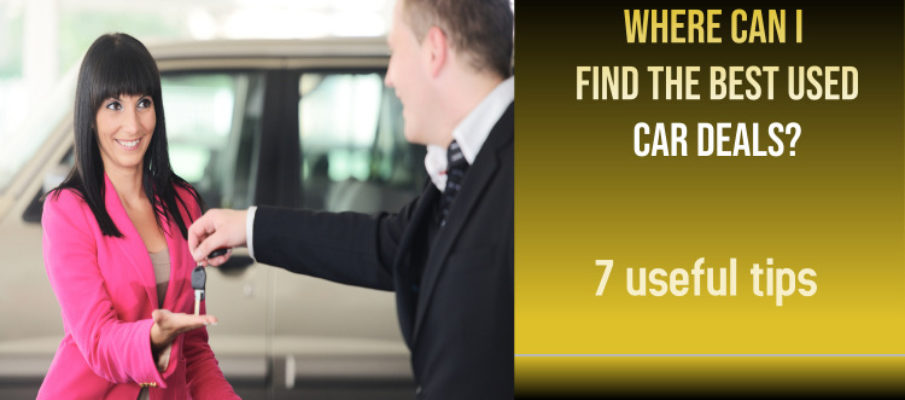Many financial experts will tell you that buying a used automobile for a low price and keeping it for a long period is one of the best methods to reduce your auto ownership costs. However, if you buy the wrong vehicle or in the wrong place, that “cheap” car could cost you hundreds of dollars in repairs or finance.
If you keep these seven points in mind while buying a used car, you will not be disappointed.
1. Don’t put too much faith in the mechanic
Many times, individuals must have heard that if you are planning to buy a used automobile, you should have your mechanic inspect the vehicle. This is something that other people do as well, and it is from here that our problems begin. It is well known that individuals frequently choose used cars and carry their mechanics with them. The customer then shuts his eyes and buys the automobile when the mechanic finishes speaking. Their biggest blunder is putting too much faith in the mechanic.
In many circumstances, the mechanic and the dealer work together daily because they are both dependent on one other, whereas the client rarely works with the technician. Even if the customer has brought him with him, everyone’s commission is bound in such a case, whether it’s a mechanic or a salesperson. If the automobile is sold, the mechanic will charge a fee of two to three thousand rupees, and the client will be unaware that he has been duped. So don’t put too much faith in the mechanic since he won’t think twice about lying to you about his commission so that he can keep working for the dealer.
2. Don’t get impressed by the dealer’s car collection
People are frequently impressed by used car dealers’ car collections, and they form the notion that if a dealer has more vehicles, it must be a good dealer. However, the consumer is once again duped. Because such dealers accept all types of vehicles, whether they are good or terrible.
The dealer then has the automobiles painted or has maintenance done on them before putting them on display for sale. Even if the automobile has a problem, the mechanics are so well-dressed that the average person cannot understand them, and the consumer buys the car by trusting them under the cover of a huge stock. To prevent this issue, go to a dealer who has a small but solid inventory.
3. If you are getting more discounts than necessary, then something may be wrong
Many times, dealers will take an unintentional automobile and fix it up, then paint it and sell it. To get the automobile out as fast as possible, the dealers offer a discount of 30 to 40 thousand dollars or more to the buyers, who mistakenly believe that they have saved money or that the car is within their budget, and are therefore duped.
If the dealer is offering large discounts and praising the car, it is prudent to be careful, since if the item is good, no one will compromise on its price, but if something goes wrong, the dealer will compensate by offering the biggest discount. I’m going to do everything I can to get the automobile out. So, if you receive a larger discount than you require, don’t be greedy; instead, consider why the dealer is now offering such a large discount.
4. Prefer to work offline rather than online
Many incidents of online fraud are coming to light at the moment, in which fraudsters impersonate army men and sell the vehicles of dealers on the web platform under their names, at a very low price. They seize them and demand money from them.
As a result, avoid falling into the trap of online platforms and do not blindly trust anyone, as this can be costly. It is preferable to purchase the car in person so that it may be examined and tried comfortably. The benefit is that both the vehicle and its owner will be in front of you, allowing you to make a more informed selection.
5. Don’t get thrilled when you first see the car; instead, get in it and drive it.
Some customers are known to get enthusiastic after seeing a car, and the dealer recognises this rashness and takes advantage of it. He will list all of the car’s characteristics, demonstrate all of the positive aspects, switch on the air conditioning, listen to the speakers, and polish the vehicle, and we will take it for granted. He’ll also reassure you by saying, ‘Be careful!’ In the car, there will be no issues.
Act with caution rather than getting overly enthused. Take a close look at the vehicle. Even if you are inexperienced, you can start the automobile by sitting in the cabin or departing and listening to the car’s unusual sound and vibration. Inquire with the dealer if there is any unusual sound or vibration. Even if a modest amount of work is done on an old vehicle that can be repaired for a low cost, the engine should not be an issue.
Take your time:
Aside from that, the car must travel at least 2 to 3 kilometres. Take it for a test drive so that the engine and transmission may be carefully examined. At least 1 to 2 kilometres Allow the vehicle to start once you’ve finished driving, and then open the bonnet to remove the oil dip. If there is smoke or oil splattered in that area, call the company right once, because this problem occurs when the engine is not running properly. Only purchase a certified vehicle.
6. If the car is not an accident, you can perform a check similar to this.
First :
If the car is not an accident, it is tough for the average person to notice it; however, an expert stated that the doom, pillar, and chassis may all be used to detect it. Look at the vehicle’s chassis from the bottom up to determine if there is any play or bend; if there is any play or bend, something is amiss.
Second:
Open the hood and look under the hood at the rear of the engine, where the suspension may be seen. The dread, on which the suspension is based, may be seen here. In the event of an accident, this is the first part to be damaged. It has the company’s paste on it. If the pasting is accidentally removed, it cannot be replaced. The company exclusively handles new car pasting and does not re-past old automobiles. So you can tell if the vehicle is an accident by looking at the Doom paste..
Third:
The pillars can also detect the vehicle’s accident to a large extent. Remove the rubber on the pillars as soon as the doors are opened and look for many dots; if cracks or joints can be found anywhere in these dots, the car has been involved in an accident.
Fourth, make sure the car is parked on a level surface. If it’s a hatchback, stand 6 to 7 feet away; if it’s an SUV, stand 9 to 10 feet away and carefully examine the vehicle’s construction. Do the same thing when standing on the vehicle’s backside. If there is a variation in the construction of the car from both sides (i.e. something tilted or raised), the vehicle may have been involved in an accident. You can double-check the pillars’ pasting by opening the rubber on the side where there is a question. Because it’s tough to recreate the paste with the same finish once it’s been ruined.
7. Don’t acquire an automobile until you’ve completed all of the necessary paperwork.
Automobiles arrive at dealerships from a variety of sources. The majority of the vehicles are traded in from showrooms. Pay attention to these documents when purchasing a used automobile.
The Registration Card (RC) is the vehicle’s most significant document, or it might be argued that it contains the vehicle’s entire horoscope. This card contains information about the car’s manufacture, registration, model number, chassis number, colour, and body type. When purchasing a used vehicle, make sure to check the registration card first. Check to see if the car has a loan on the card. This information is written at the bottom of the card, along with the name of the bank that is financing the vehicle.
If the bank’s name is written on the RC, you must first obtain the bank’s NOC from the car’s seller; otherwise, the vehicle will be difficult to transfer. You may also check whether or not the vehicle is financed by going to the RTO’s website and selecting the Hypothicated option.
Obtain crime report from police station:
To obtain a crime report, go to the following police station: You’ll find the address on the RTO, so go to the nearest police station and obtain the vehicle’s crime report to avoid any problems in the future. It is also available at the Police Headquarters (PHQ). This will reveal whether the vehicle you are purchasing has been involved in any criminal activity or if there is a case against it. Additionally, information on the lack of any challan on the car can be obtained from the RTO of the concerned area; otherwise, it may become a headache for you.
Understand the significance of the sale letter: When selling or purchasing a vehicle, the sale letter is a critical document. If you are selling the automobile, remember to sign the sale letter at the RTO so that you are not held liable if the vehicle is involved in an accident in the future. An agreement can also be reached with the person who sold the car. Similarly, when purchasing a car, be aware of the importance of the sale letter and request one from the dealer (or whoever is purchasing the vehicle) that bears the RTO’s seal and signature, ensuring that the vehicle is transferred to your name without delay.


October 15, 2022 @ 3:53 pm
Valuable info. Fortunate me I discovered your site by chance, and I’m
stunned why this coincidence did not took place in advance!
I bookmarked it.
October 16, 2022 @ 3:12 am
It’s actually a cool and helpful piece off information. I’m satisfied that you simply shared this helpful information with us.
Please keep us informed like this. Thanks for sharing.